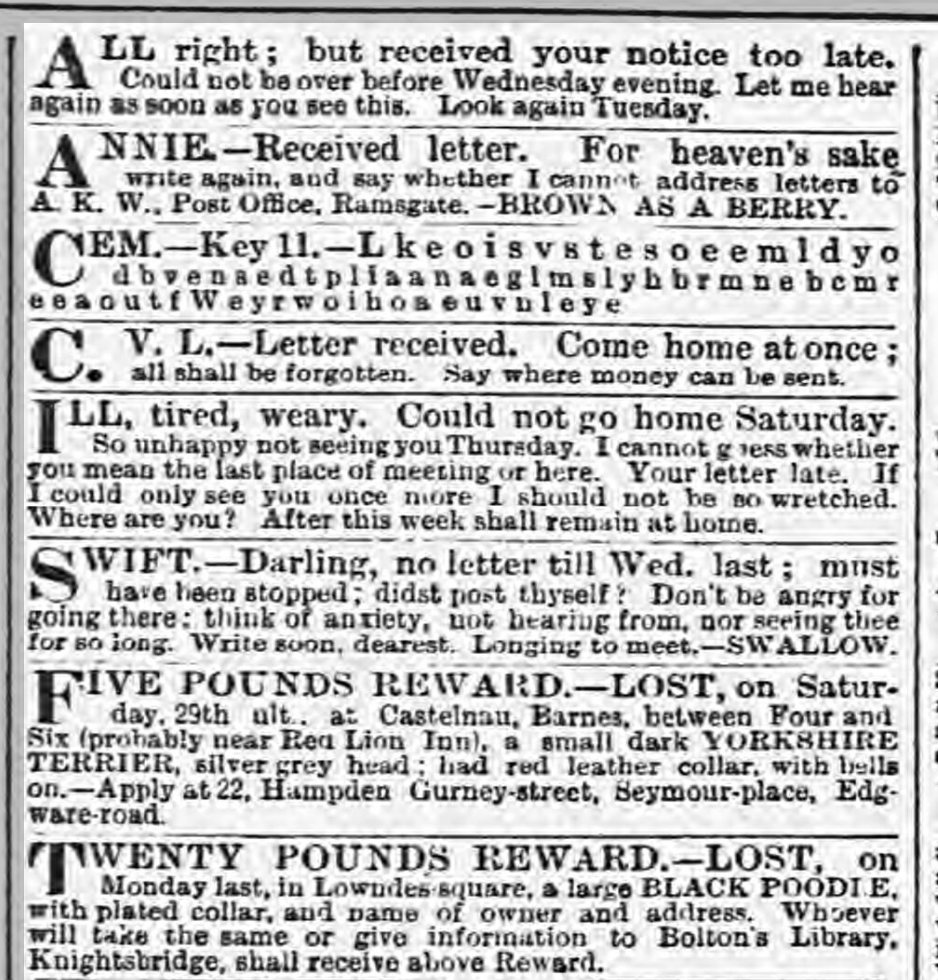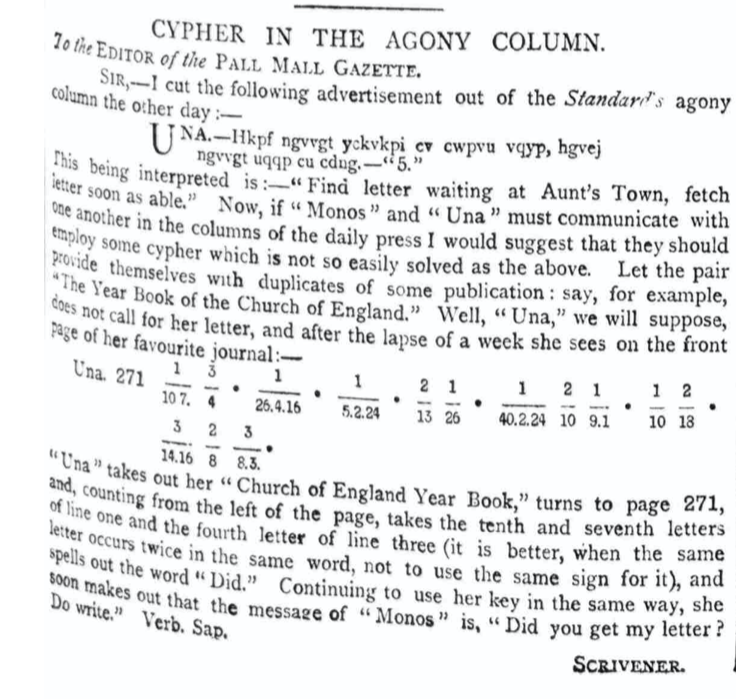Written by Education Outreach
February 9, 2021
Numbers, algorithms and clicks are used to evaluate and determine so much in today’s data-driven world. It may be strange to think of a time when these concepts were novel. So, let’s look back to the Victorian era. During this period – characterized by classes that were not meant to mingle – secret alphanumeric codes became a fad to not only communicate information, but also romance.
VICTORIAN CONNECTION
Cryptography is the study and art of communicating through codes including both writing (encoding) and solving (decoding). A cryptologist must be adept in mathematics and linguistics, both topics that were in vogue with the Victorians, to ensure that only the intended recipient can understand their secret message.
“Cryptography was incredibly important,” said Amy Huseby, an assistant professor of English whose research explores the relationship between British literature and numbers. “The use of statistics was a brand new science in the early part of the 19th century. The idea that you could use statistics to count groups of people and then use it to predict behavior was a new idea.”
The government could use the statistics it collected on deaths, births, marriages and disease, to make policy decisions and allocate resources. In short, this is the moment in history when organized data really began to impact the fundamental mechanics of people’s lives. “You may notice a lot of these forms of counting were applied to women’s bodies,” Huseby said.
This may not be a surprise given our modern view of Victorians as a bit buttoned up. Both literally, with tight corsets, hat pins and bustles, but also figuratively in regards to romance. While it is true there was a very rigid public/private divide developed in the Victorian era, thinking of the Victorians as repressed is a generalization that Huseby warns against. In fact, there is surprisingly public documentation of their amorous passions.
LOVE HURTS
Victorian-era newspapers were witness to a strange phenomenon: the frequent and common exchange of coded love notes. The so-called agony columns is where people could submit messages to be prominently displayed newsprint for all to see. Lovers would often use these messages to communicate with each other in secret to thwart judgement in a society with rigid gender and class roles. Think of it as an odd mix of Victorian Twitter and Craigslist. These flowery confessions of love popped up alongside gut-wrenching emotional dramas and were sandwiched between pleas for the return of a lost hat or advertisements of a new litter of pups. While it all played out on the front pages of newspapers, the juicy exchanges, like these two from the Evening Standard‘s front page, depended on codes for its contents to remain quite private in the most public of places.

Evening Standard Sept. 4, 1888 | Evening Standard Aug. 5, 1882
Sometimes authors would use something as simple as code-names, like “Swift” and “Swallow,” to keep their identities a secret. Other times they would use more elaborate means like codes and ciphers. Nosy strangers would often make a habit of trying to break these codes and attempt to drop into their conversations either to tell them off or cheer them on. Essentially, the Victorian version of internet trolls. For example, this person took the time to write the Pall Mall Gazette to suggest a more secure method of encryption for a couple whose code was just too easy to break.

Pall Mall Gazzette
As these examples make clear, some ciphers remained more secret than others. Think it’s easy? Try your hand at creating a Crypto-Valentine. Share with @FIUCASE and see if anyone else can crack your code.
DID YOU KNOW?
We encoded our own secret message in the FIU@Home article you just read. Take a look at the below number series and see if you can decode the crypto-valentine.
| 1.1.1 | 2.2.1 | 8.10.1 | 4.4.3 | 3.1.3 | 7.12.1 | 4.6.1 | 2.4.2 | 1.1.4 | 5.2.6 | 7.1.1 | 9.1.2 | 9.2.1 |
| 4.12.1 | 1.18.8 | 6.8.1 | 3.6.2 | 6.1.2 | 10.5.1 | 1.4.1 | 3.2.1 | 2.1.2 | 3.10.1 | 5.6.3 | 7.6.7 | 5.1.3 |
Frances Farabaugh contributed to this article.
The challenge to create something new is enthusiastically accepted by artists and scientists alike. Whether repurposed, recycled or reimagined – there are many ways to make something unique to solve a problem or enhance the world. Follow FIU@Home for more ways to create something new.